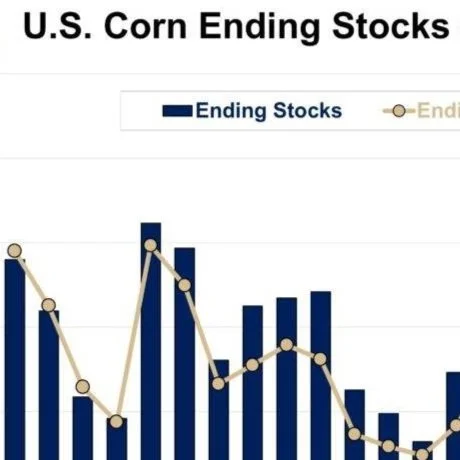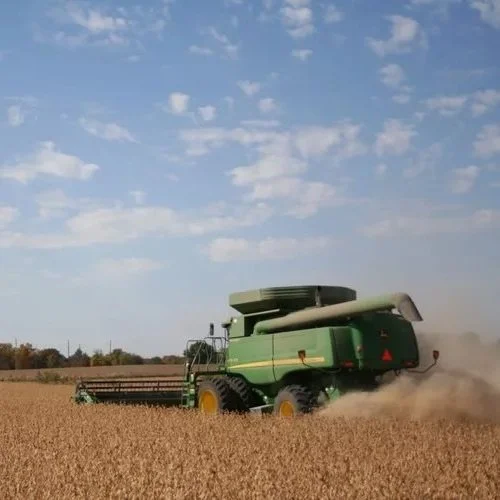The 2024 OVT Trial was planted at these LSU AgCenter research stations: Central Station, Baton Rouge; Dean Lee, Alexandria; Iberia, Jeanerette; Macon Ridge, Winnsboro; Red River, Bossier; and Rice Station, Crowley. The MG 3.9-4.4 OVT data from the Red River Research Station was not included due to extreme weather damage.
Read MoreAbout 200 farmers, consultants and other agriculture industry professionals attended the 64th annual Tri-State Soybean Forum last Friday.
They took stock of both the good and bad in soybean production in Arkansas, Louisiana and Mississippi.
Read MoreLSU AgCenter plant pathologist Paul “Trey” Price received the Louisiana Soybean and Feed Grains and Promotion Board Distinguished Professorship on Nov. 20, at the board’s proposal meeting in Baton Rouge.
Read MoreAmerican farmers are worried that President-elect Donald Trump’s sweeping tariff plans will curb their access to top soy buyer China, but tariffs could also lure companies to build more U.S. crushing plants, hungry for domestic supplies.
Read MoreThe first state to complete the 2024 soybean harvest was a surprise: Minnesota has finished harvest, the USDA said in the latest Crop Progress Report, released Nov. 4. The state was 5 percentage points ahead of its five-year average for Nov. 3.
This is a change from 2023, when Louisiana was the first state to get all of its soybeans in the bin.
Read MoreLouisiana corn for grain production is forecast at 84.1 million bushels, unchanged from the October 1 forecast but down 29 percent from 2023. Based on conditions as of November 1, yield is expected to average 189 bushels per acre, unchanged from last month but up 14 bushels from last year. Producers expect to harvest 445,000 acres of corn for grain, down 235,000 acres from 2023.
Upland cotton production is forecast at 310,000 bales, up 10,000 bales from the October 1 forecast and 101,000 bales above last year.
Read MoreSoy growers are raising concerns as EPA tightens glufosinate-P registration restrictions, a move some farmers are calling a “result of caving to pressure from environmental groups.”
Read MoreAgriculture giants including Cargill Inc. and Bunge Global SA are slowing their buying of soybeans due to uncertainty over U.S. biofuels policy.
Read MoreSelecting the most adapted and high yielding varieties is one of the most important decisions a soybean producer makes every year. The LSU AgCenter conducts an Official Variety Trial (OVT) and Core-block demonstration plots to provide unbiased data to assist in variety selection. The OVT and core-block demonstrations are planted throughout the state to collect performance data in different environments. It is important for a producer to consider how varieties perform in an environment similar to their own and in multiple environments. Varieties that perform consistently well across multiple environments and years could be considered to have more performance stability.
Read MoreThe 2024/25 U.S. corn outlook calls for smaller supplies, larger exports, and reduced ending stocks. Projected beginning stocks for 2024/25 are 52 million bushels lower based on the Grain Stocks report. Corn production is forecast at 15.2 billion bushels, up 17 million from last month on a 0.2-bushel increase in yield to 183.8 bushels per acre. Harvested area for grain is unchanged at 82.7 million acres. Total use is raised slightly to 15.0 billion bushels reflecting greater exports.
Read MoreLouisiana corn for grain production is forecast at 84.1 million bushels, down 1 percent from September 1 forecast and down 29 percent from 2023. Based on conditions as of October 1, yield is expected to average 189 bushels per acre, down 2 bushels from last month but up 14 bushels from last year. Harvested acreage for grain is estimated at 445,000 acres, down 235,000 acres from 2023.
Read MoreLouisiana all wheat stored in off farm storage facilities on September 1, 2024 totaled 6.92 million bushels, up 28 percent from a year ago. United States all wheat stored in all positions on September 1, 2024 totaled 1.99 billion bushels, up 12 percent from a year ago. On farm stocks are estimated at 664 million bushels, up 11 percent from last September. Off farm stocks, at 1.32 billion bushels, are up 13 percent from a year ago.
Read MoreThe 2024 growing season is wrapping up for the nation’s soybean growers. As focus turns to harvest, soybean conditions have fluctuated across the top 18 growing states.
Louisiana was the only state to report no soybeans in very poor shape. Nearly three-quarters of the state’s soybean crop was rated in good/excellent condition.
Read MoreSoybean harvest has started in all but one of the 18 top soybean-growing states, with progress ranging from 1% to 46%.
Despite a second straight week of only a few days suitable for fieldwork, Louisiana still leads the country’s soybean harvest. As of Sept. 15, 46% of the state’s soybeans had been harvested.
Read MoreEPA has open for public comment its draft Insecticide Strategy (IS), comments for which are due on September 23. EPA’s intent is to use the draft IS to put in place a framework of runoff/erosion, spray drift, and in some cases on-field mitigations to reduce risks to endangered species and their critical habitats, aiming to bring its pesticide program into compliance with the Endangered Species Act. However, many who have reviewed the proposal are concerned with the cost, complexity, and reduced pest management effectiveness it could impose on U.S. agricultural users of insecticides.
Read More














